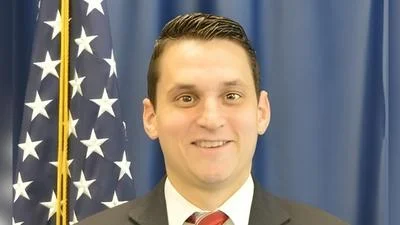The Congressional Record is a unique source of public documentation. It started in 1873, documenting nearly all the major and minor policies being discussed and debated.
“CARLSBAD CAVERNS NATIONAL PARK” mentioning the U.S. Dept. of Energy was published in the Senate section on pages S4086-S4087 on April 24, 1996.
The publication is reproduced in full below:
CARLSBAD CAVERNS NATIONAL PARK
Mr. BINGAMAN. Mr. President, in December 1994, Congress received the National Cave and Karst Research Institute study from the National Park Service. The report studied the feasibility of creating a National Cave and Karst Research Institute in the vicinity of Carlsbad Caverns National Park, NM, as directed by Public Law 101-578. Today, I am here to introduce a bill which follows the guidelines of that report and which will establish the National Cave and Karst Research Institute in Carlsbad, NM.
While other Nations have recognized the importance of cave resource management information and have sponsored cave and karst research, the United States has failed, until recently, to appreciate or work to understand cave and karst systems and their importance. As we approach the 21st century, the protection and management of our water resources has been identified as one of the major issues facing the world. In America, the majority of the Nation's fresh water is ground water--of which 25 percent is located in cave and karst regions.
Recent studies have also indicated that caves contain valuable information related to global climate change, waste disposal, ground water supply and contamination, petroleum recovery, and biomedical investigations. Caves provide a unique understanding of the historic events of humankind. Further they are considered sacred and have religious significance for American Indians and other Native Americans.
According to the Federal Cave Resources Protection Act, karst is defined as a landform characterized by sinkholes, caves, dry valleys, fluted rocks, enclosed depressions, underground streamways and spring resurgences. As a whole, 20 percent of the United States is karst. In fact, east of central Oklahoma, 40 percent of the country is karst. Our National Park System manages 58 units with caves and karst features, yet academic programs on these systems are virtually nonexistent. Most research is conducted with little or no funding and the resulting data is scattered and often hard to locate. The few cave and karst organizations and programs which do exist, have substantially different missions, locations and funding sources and there is no centralized program to analyze data or determine future research needs.
In 1988 Congress directed the Secretaries of the Interior and Agriculture to provide an inventory of caves on Federal lands and to provide for the management and dissemination of information about the caves. That directive has served only to make Federal land management agencies more aware of the need for a cave research program and a repository for cave and karst resources. In 1990, Congress further directed the Secretary of the Interior, through the Director of the National Park Service, to establish and administer a Cave Research Program and prepare a proposal for Congress on the feasibility of a centralized National Cave and Karst Research Institute.
The National Cave and Karst Research Institute Study Report to Congress was released in December 1994 and not only supports establishing the Institute, but lists several serious threats to continued uninformed management practices.
Threats such as: alterations in the surface water flow patterns in karst regions, alterations in or pollution of water infiltration routes, inappropriately placed toxic waste repositories and poorly managed or designed sewage systems and landfiles. The findings of the report conclude that it is only through a better understanding of cave resources that we can prevent detrimental impacts to America's natural resources and cave ecosystems.
The goals of the National Cave and Karst Research Institute, as outlined in the report, would be to further the science of speleology, to centralize speleological information, to further interdisciplinary cooperation in cave and karst research programs, and to promote environmentally sound, sustainable resource management practices. These goals would work hand in hand with the proposed objectives of the Institute to establish a comprehensive cave and karst library and information data base, to sponsor national and international cave and karst symposiums, to develop long term research studies, to produce cave-related educational publications and to develop cooperative agreements with all Federal agencies having cave management responsibilities.
The vicinity of Carlsbad Caverns National Park is ideal due to the community support which already exists for the establishment of the institute and the diverse cave and karst resources which are found throughout the region.
Carlsbad, NM, has grown from a small railroad stop on what is now the Santa Fe Railroad to a growing city with a population of over 170,000 in the tri-county area. It continues to attract new businesses, small manufacturers, retirees and research facilities, including the U.S. Department of Energy's Carlsbad area office. In addition, Carlsbad Caverns National Park attracts over 700,000 visitors per year.
The National Cave and Karst Research Institute would be jointly administered by the National Park Service and another public or private agency, organization, or institution as determined by the Secretary. The Carlsbad Department of Development [CDOD], after reviewing the National Cave and Karst Research Institute study report, has developed proposals to obtain financial support from available and supportive organizational resources, including personnel, facilities, equipment and volunteers. They further believe that they can obtain serious financial support from the private sector and would seek a matching grant from the State of New Mexico equal to the available Federal funds.
Carlsbad already has in place many of the needed cooperative institutions, facilities and volunteers that will work toward the success of the National Cave and Karst Institute. I strongly urge my colleagues to support this legislation to increase our understanding of cave and karst systems.
____________________








